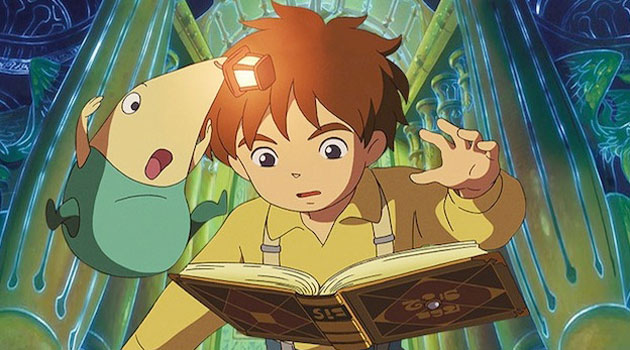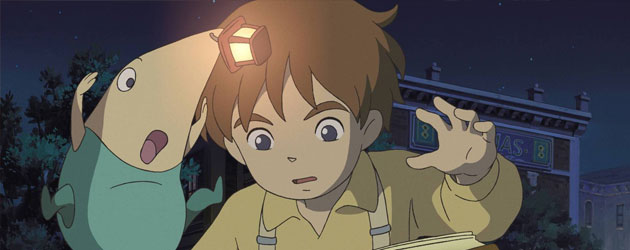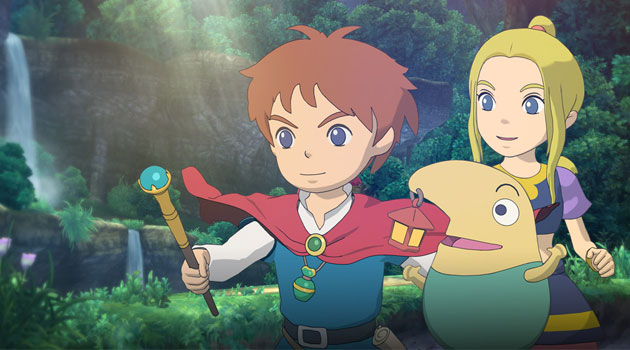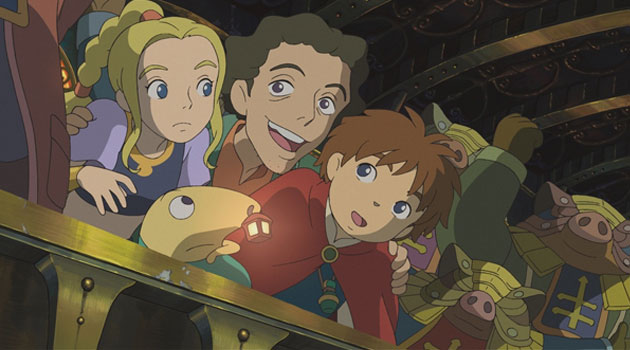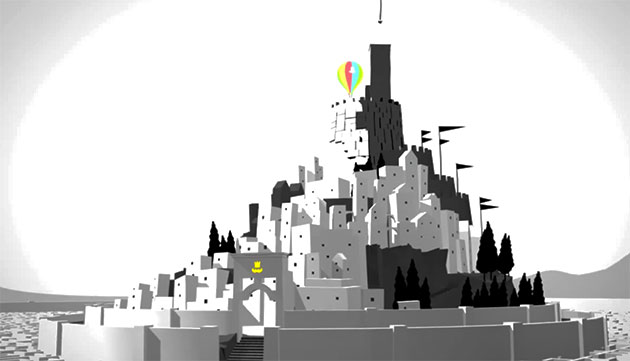Platform: Playstation 3
Developer: Level 5
Publisher: Namco Bandai
As we hit the twilight of the seventh generation of video game consoles, its easy to look back and see that the traditional Japanese RPG was one of the genres that suffered the greatest in the transition to high definition consoles. JRPG powerhouse Square-Enix stumbled with their Final Fantasy series and although other JRPG developers continued to output decent games, a lot of them found their home on the handheld systems, the PSP and the DS.
It’s a strange turn of events. For the same reasons that I found the downturn of horror games this generation to be unexpected, it seems a shame because the imaginative fantasy worlds of JRPGs seem like the exact sort of thing that should have benefited from sharper fidelity and higher production values.
It’s been a long time coming but a lot of that potential in what a high calbire JRPG could be is finally realised with Level 5 and Studio Ghibli’s excellent Ni No Kuni: Wrath of the White Witch.
The collaboration between a game developer and the world famous Japanese animation studio has long been anticipated and the results are exactly what you would hope for. Ni No Kuni is a game that has very traditional JRPG gameplay mechanics running in the engine room and it is presented in the form of a gorgeous animated adventure about a young boy named Oliver who escapes into a fantasy world after the death of his mother.
The characters and themes explored in Ni No Kuni are classic Studio Ghibli fare. Oliver himself may be a paint-by-numbers protagonist but he is accompanied by the highly entertaining and very Welsh Lord High Lord of the Faeries Mr Drippy – a pocket sized creature with a lantern for a nose. Mr Drippy is brought to life when Oliver’s mother dies of a heart attack and he weeps onto a stuffed toy that is touched by his tears. The implication here is clear. The magical world and all its inhabitants that Oliver comes across during the game are in his imagination as he learns to cope with his grief. The royal princesses, cunning thieves and mysterious wizards that he meets in the other realm are exaggerated characterisations of people in his hometown. The sickly girl who never leaves her home, the friendly local grocerer or even the neighbourhood cat.
Over the course of the game, Oliver comes to terms with the fact that he cannot bring his mother back and learns that it is important to move forward with his life and remain a kind-hearted person. He discovers this through a series of interactions with broken-hearted people in the other realm who share the common theme of being good natured people that have been consumed by a setback in life. It’s a simple and effective story that is told with great flair.
The play mechanics in the game are very conventional but I say that in a positive light. What fan of JRPGs doesn’t welcome the sight of a world map, an airship, a flying dragon or a multi-level dungeon? And particularly in this post Final Fantasy XIII world where we can’t take these tropes for granted from the most famous staple in the genre.
The combat system in the game is a blend of Pokemon and Namco’s Tales series. The battle sequences are played out in a turn based fashion but it is possible to move the onscreen characters to navigate a more advantageous attacking or defensive position. Each character also has three familiars that they can fight with. These familiars, creatures in the game that can be captured and trained, will develop new skills as they gain more experience and they can also evolve forms. The game wisely opts to dripfeed these characters to you so you become comfortable with their use. Once the whole cast is doled out, you will be juggling three character who each have three familiars. In effect, you will be switching between 12 different avatars in most combat sequences which can take a little getting used to.
A blemish on the game is the unfortunate AI exhibited by your team mates. It’s possible to tailor their stance to be attack, defence or support oriented but they seem to veer from one extreme to the other. They either rapidly exhaust their precious magic points (which do not auto-refill) casting needlessly extravagant spells on minor enemies in the game or they are switched off entirely and only do physical attacks and can’t even be relied on to heal themselves when necessary. This means that during the early stages of the game, there is a fair bit of micromanagement involved with approaching combat. Once you get a dinocerous though, all that changes, as he can one-hit-kill the smaller enemies with his Earsplitter attack which streamlines the whole enterprise.
The main story in Ni No Kuni unfolds over a span of roughly thirty hours, which involves plenty of dungeon crawling and world exploring, interspersed with some beautiful hand-drawn cutscenes from Studio Ghibli. There are also plenty of traditional side quests that you can undertake including bounty hunting, fetch questing and dabbling in alchemy. I became so taken with Ni No Kuni that I ended up exhaustively completing all the extraneous content. Clocking in at eighty five hours, Ni No Kuni is the first game I’ve bothered to chase down a platinum trophy for on the Playstation – the recognition for completing every rewardable task in the game.
Suffice to say I enjoyed this game very much. It scratched a video gaming itch that has been lingering throughout the lifespan of the Playstation3. It’s a hugely entertaining game and although I will give it some time for added perspective, I feel I enjoyed it as much as the classics in the genre – the Final Fantasy VIs and the Chrono Triggers of the world. It’s certainly not a game without its flaws but the combination of the Studio Ghibli production design and Level 5’s entertaining blend of traditional RPG mechanics was hugely entertaining to experience. It is a game full of charm and shows a path forward for JRPGs to modernize their presentation but retain their gameplay heritage.
Review Overview
RATING
CLASSIC
Summary : Exactly what you'd hope for in an interactive Studio Ghibli tale. It's a gorgeous, beautifully animated old school JRPG.
 The FAT Website est. 1999
The FAT Website est. 1999

